#eastern europe folklore
Explore tagged Tumblr posts
Text

@krikunjayvoice original character, i love this scary bird so much
#slavic mythology#original character#original art#mythology and folklore#mythical creatures#monster art#eastern europe folklore
55 notes
·
View notes
Text
The Yaga journal: Witches and demons of Eastern Europe
The next article I’ll translate from the issue (I won’t translate all of them since some are not very relevant for this blog) is “Baba Yaga, witches, and the ambiguous demons of oriental Europe” by Stamatis Zochios.
The article opens by praising the 1863′s “Reasoned dictionary of the living russian language”. by scholar, lexicograph and folklorist Vladimir Dahl, which is one of the first “systematic essays” that collects the linguistic treasures of Russia. By collecting more than thirty thousand proverbs and sayings, insisting on the popular and oral language, the Dictionary notably talked about various terms of Russian folklore; domovoi, rusalka, leshii... And when it reaches Baba Yaga, the Dictionary calls her : сказочное страшил��щ (skazochnoe strashilishh) , that is to say “monster of fairytales”.But the article wonders about this denomination... Indeed, for many people (such as Bogatyrev) Baba Yaga, like other characters of Russian fairytales (Kochtcheï or Zmey Gorynych) do not exist in popular demonology, and is thus exclusively a character of fairy tales, in which she fulfills very specific functions (aggressor, donator if we take back Propp’s system). But the author of this article wonder if Baba Yaga can’t actually be found in “other folkloric genres” - maybe she is present in legends, in popular beliefs, in superstitions and incantations.
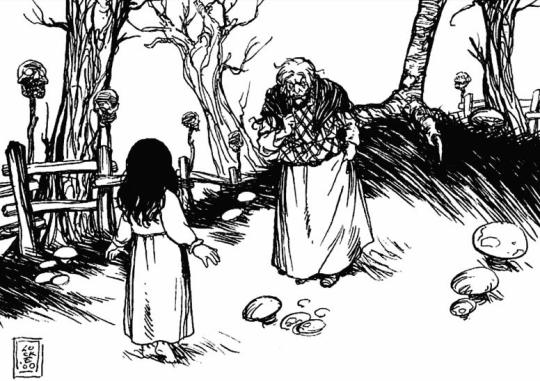
Baba Yaga, as depicted in the roleplaying game “Vampire: The Masquerade”
For example, in a 19th century book by Piotr Efimenko called “Material for ethnography of the Russian population of the Arkhangelsk province”, there is an incantation recorded about a man who wante to seduce/make a woman fall in love with him. During this incantation the man invokes the “demons that served Herod”, Sava, Koldun and Asaul and then - the incantation continues by talking about “three times nine girls” under an oak tree”, to which Baba Yaga brings light. The ritual is about burning wood with the light brought by Baba Yaga, so that the girl may “burn with love” in return. Efimenko also mentions another “old spell for love” that goes like this: “In the middle of the field there are 77 pans of red copper, and on each of them there are 77 Egi-Babas. Each 77 Egi-Babas have 77 daughters with each 77 staffs and 77 brooms. Me, servant of God (insert the man’s name here) beg the daughters of the Egi-Babas. I salute you, daughters of Egi-Babas, and make the servant of God (insert name of the girl here) fall inlove, and bring her to the servant of God (insert name of the man here).” The fact Baba Yaga appears in magical incantations proves that she doesn’t exist merely in fairytales, but was also part of the folk-religion alongside the leshii, rusalka, kikimora and domovoi. However two details have to be insisted upon.
One: the variation of the name Baba Yaga, as the plural “Egi-Babas”. The name Baba Yaga appears in numerous different languages. In Russian and Ukrainian we find Баба-Язя, Язя, Язі-баба, Гадра ; in Polish jędza, babojędza ; in Czech jezinka, Ježibaba meaning “witch, woman of the forest”, in Serbian баба jега ; in Slovanian jaga baba, ježi baba ... Baba is not a problem in itself. Baba, comes from the old Slavic баба and is a diminutive of бабушка (babyshka), “grand-mother” - which means all at the same time a “peasant woman”, “a midwife”, a (school mistress? the article is a bit unclear here), a “stone statue of a pagan deity”, and in general a woman, young or old. Of course, while the alternate meanings cannot be ignored, the main meaning for Baba Yaga’s name is “old woman”. Then comes “Yaga” and its variations, “Egi”, “Jedzi”, “Jedza”, which is more problematic. In Fasmer’s etymology dictionary, he thinks it comes from the proto-Slagic (j)ega, meaning “wrath” or “horror”. Most dictionaries take back this etymology, and consider it a mix of the term baba, старуха (staruha), “old woman”, and of яга, злая (zlaia), “evil, pain, torment, problem”. So it would mean злая женщина (zlaja zhenshhina), “the woman of evil”, “the tormenting woman”. However this interpretation of Yaga as “pain” is deemed restrictive by the author of this article.
Aleksandr Afanassiev, in his “Poetic concepts of the Slavs on nature”, proposed a different etymology coming from the anskrit “ahi”, meaning “snake”. Thus, Baba Yaga would be originally a snake-woman similar to the lamia and drangua of the Neo-hellenistic fairytales and Albanian beliefs. Slavic folklore seems to push towards this direction since sometimes Baba Yaga is the mother of three demon-like daughters (who sometimes can be princesses, with one marrying the hero), and of a son-snake that will be killed by the hero. Slovakian fairytales tale back the link with snakes, as they call the sons of Jezi-Baba “demon snakes”. On top of that, an incantation from the 18th century to banish snakes talks about Yaga Zmeia Bura (Yaga the brown snake): “I will send Yaga the brown snake after you. Yaga the brown snake will cover your wound with wool.” According to Polivka, “jaza” is a countryside term to talk about a mythical snake that humans never see, and that turns every seven years into a winged seven-headed serpent. With all that being said, it becomes clear (at least to the author of this article) that one of the versions of Yaga is the drakaina, the female dragon with human characteristics. These entities are usually depicted with the head and torso of women, but the lower body of a snake. They are a big feature of the mythologies of the Eurasian lands - in France the most famous example is Mélusine, the half-snake half-woman queen, whose story was recorded between the end of the 14th century and the beginning of the 15th by Jean d’Arras (in his prose novel La Noble Histoire de Lusignan) and by Couldrette (in the poetic work Roman de Mélusine). For some scholars, these hybrid womans are derived from the Mother Goddess figure, and by their physical duality manifest their double nature of benevolence-malevolence, aggressor-donator.
If we come back to the incantation of Efimenko, we notice that the 77 daughters of Baba Yaga each have a “metly”, a “broom”. This object isn’t just the broom Baba Yaga uses alongside her mortar and pestle to travel around - it is also the main attribute of the witches, and the witch with her broom is a motif prevalent in numerous textes of Western Europe between the 15th and 16th centuries. Already in medieval literature examples of this topic could be found: in the French works “Perceforest” and “Champion des dames”, the old witches are described flyng on staffs or brooms, turning into birds, to either eat little children or go to witches’ sabbaths. Baba Yaga travels similarly: Afanassiev noted that she goes to gathering of witches while riding a mortar, with a pestle in one hand and a broom in the other. Federowsky noted that Baba Yaga was supposed to be either the “aunt” or the “mistress” of all witches. Baba Yaga herself in often called an old witch, numerous dictionaries explaining her name as meaning старуха-колдунья (staruha-koldun’ja), which literaly means old witch. Even more precisely, she is an old witch who kidnaps children in order to devour their flesh and drink their blood. We find back in other countries of Europe this myth of the “bogeywoman cannibal-witch”, especially dangerous towards newborns and mothers, as the “strix” or “strige”. According to Polivka, in his 1922 article about the supernatural in Slovakian fairytales, the ježibaba is the same being as the striga/strige. And he also ties these two beings to the bosorka, a creature found in Slovakia, in eastern Moravia, and in Wallachia, and which means originally a witch or a sorceress, but that in folklore took a role similar to the striga or ježibaba.
Vinogradova, in a study of the figure of the bosorka, described this Carpathian-Ukrainian witch as a being that attacked people in different ways. For example she stole the milk from the cows - a recurring theme of witches tales in Western Europe (mentionned by Luther in his texts as to one of the reasons witches had to be put to death), but that also corresponds to a tale of the Baba Yaga where she is depicted as sucking the milk out of the breast of a young woman (an AT 519 tale, “The Strong Woman as Bride”). In conclusion, the striga-bosorka is clearly related to the Slovakian version of Baba Yaga, the Ježibaba. The Ježibaba, a figure of Western Slavic folklore, also appears as numerous local variations. She is Jenzibaba, Jendzibaba, Endzibaba, Jazibaba, and in Poland she is either “jedza-baba” (the very wicked woman) or “jedzona, jedza-baba, jagababa” (witch). However this Slovakian witch isn’t always evil: in three fairytales, Ježibaba is a helper bringing gifts, appearing as a trio of sisters (with a clear nod to the three fatae, the three moirae or the three fairies of traditional fairytales) who help the hero escape an ogre who hunts him. They help him by gifting him with food, and then lending him their magical dogs. And in other farytale, the three sisters help a lazy girl spin threads.
In this last case, Ježibaba is tied to the action of spinning. It isn’t a surprise as Baba Yaga herself is often depicted spinning wool or owning a loom ; and several times she asks the young girls who arrive at her home to spin for her (AT 480, The Spinning-Woman by the Spring) - AND in some variations, her isba doesn’t stand on chicken legs, but rather on a spindle. This relationship between the female supernatural figure (fairy or witch) and the action of spinning is very typical of European folkore. In several Eastern Slavic traditions, the figure of Paraskeva-Piatnitsa (or Pyatnitsa-Prascovia, who is often related to Baba Yaga), is an important saint, personification of Friday and protectress of crops - and she punishes women who dare spin on the fifth day of the week. Sometimes it is a strong punishment: she will deform the fingers of the woman who dares spin the friday, which relates her to the naroua (or naroue, narova, narove) a nocturnal fairy of Isère and Savoie in France, who manifests during the Twelve Days of Christmas and enters home to punish those that work at midnight or during holidays - especially spinners and lacemakers. In a Savoie folktales she is said to beat up lacemakers until almost killing them, hits them on the fingers with her wand, beats them up with a beef’s leg or a beef’s nerves, and attacks children with both a cow’s leg in one hand and a beef’s leg in another. These bans are also found in the Greek version of Piatnitsa: Agia Paraskevi, Saint Paraskevi, who punishes the spinners that work on Thursday’s nights, during Friday, or during the feast-day of the Saint (26 of July). But her punishment is to force them to eat the flesh of a corpse. Finally, we find the link between spinning and the demonic woman/witch/fairy through the Romanian cousin of Baba Yaga - Baba Cloanta, who says that she is ugly because she spinned too much during her life. And it all ties back to the “Perceforest” tale mentionned above - in the text, the witches, described as old matrons disheveled and bearded, not only fly around on staffs and little wooden chairs, but also by riding on spindles and reels/spools.
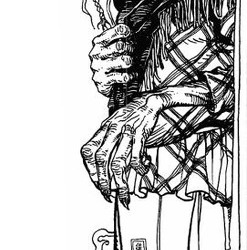
Another typical example of “demonic woman” often compared and related to Baba Yaga is the character known as “Perchta” in her Alpine-Germanic form, Baba Pehtra in Slovenia, or Pechtrababajaga according to a Russian neologism. The name Perchta, Berchta, Percht, Bercht comes from the old high German “beraht”, of the Old German “behrt” and of the root “berhto-”, which is tied to the French “brillant” and the English “brilliant”. So Berchta, or Perchta, would mean “the brilliant one”, “the bringer of light”. Why such a positive name for a malevolent character?
In 1468, the Thesaurus pauperum, written by John XXI, compares two fairies with a cult in medieval France, “Satia” and “dame Abonde”, with another mythological woman: Perchta. The Thesaurus pauperum describes “another type of superstition and idolatry” which consists in leaving at night recipients with food and drinks, destined to ladies that are supposed to visit the house - dame Abonde or Satia, that is also known as “dame Percht” or “Perchtum”, who comes with her whole “troop”. In exchange of finding these open recipients, the ladies will thenfill them regularly, bringing with them riches and abundance. “Many believed that it is during the holy nights, between the birth of Jesus and the night of the Epiphany, that these ladies, led by Perchta, visit homes”, and thus during these nights, people leave on the table bread, chesse, milk, meat, eggs, wine and water, alongside spoons, plates, cups, knives, so that when lady Perchta and her group visit the house, they find everything prepared for them, and bless the house in return with prosperity. So the text cannot be more explict: peasants prepared meals at night for the visit of lady Perchta, it is the custom of the “mensas ornare”, to prepare the table in honor of a lady visiting houses at night. If she finds offerings - cuttlery, drinks, food, especially sugary food - she rewards the house with riches. Else, she punishes the inhabitants of the home.
But Perchta doesn’t just punish for this missing meal. Several stories also describe Perchta looking everywhere in the house she visits, checking every corner to spot any “irregularity”. The most serious of those sins is tied to spinning: the woman of the house is forced to stop her work before midnight, or to not work on a holiday - especially an important holiday of the Twelve Days, such as Christmas or the Epiphany. If the woman is spotted working ; or if Perchta doesn’t found the house cleaned up and tidied up ; or if the flax is not spinned, the goddess (Perchta) will punish the woman. This is why she was called “Spinnstubenfrau”, “the woman of the spinning room”. It is also a nickname of a German spirit known as Berchta - as Spinnstubenfrau, she takes the shape of an old witch who appears in people’s houses during the winter months. She is the guardian spirit of barns and of the spinning-room, who always check work is properly and correctly done. And her punishment was quite brutal: she split open the belly of her victim, and replaces the entrails with garbage. Thomas Hill in his article “Perchta the Belly Slitther” sees in this punishment the remnants of old chamanic-initiation rite ; which would tie to it an analysis done by Andrey Toporkov concerning the “cooking of the child” by Baba Yaga in the storyes of the type AT 327 C or F. In these tales a boy (it might be Ivashka, Zhikharko, Filyushka...) arrives at Baba Yag’s isba, and the witch asks her daughter to cook the boy. The boy makes sure he can’t be pushed in the oven by taking a wrong body posture, and convinces the girl to show him how he should enter the oven. Baba Yaga shows him to do so, enters the oven, and the boy finds the door behind her, trapping Baba Yaga in the fire. According to Toporkov, we can find behind this story an old ritual according to which a baby was placed three times in an oven to give it strength. (The article reminds that Vladimir Propp did highlight the function of Baba Yaga as an “initiation rite” in fairytales - and how Propp considered that Baba Yaga is a caricature of the leader of the rite of passage in primitive societies). And finally, in a tale of Yakutia, the Ega-Baba is described as a chaman, invoked to resurrect a killed person. The author of the article concludes that the first link between Yaga and Perchta is that they are witches/goddesses that can be protectress, but have a demonic/punishment-aspect that can be balanced by a benevolent/initiation-aspect. But it doesn’t stop here.
The Twelve Days are celebrations in honor of Perchta, practiced in Germany, Austria and Switzerland. Still today, “Percht” is a term used to call masked person who haunt at night the villages of High-Styria or the land of Salzbourg: they visit houses while wearing masks, clothed in tatters and holding brooms. During these celebrations, young people either dress up as beautiful girls in traditional costumes (the schöne Perchten), either as ugly old woman (die schiache Perchten). These last ones are inspired by the numerous depictions of Perchta as an old woman, or sometimes a human-animal hybrid, with revolting trait - most prominent of them being the feet of a goose. This could explain in Serbia the existence of a Baba Jaga/Baba Jega with a chicken feet, or even the chicken feet carrying the isba of Baba Yaga. This deformation also recalls a figure of the French region of Franche-Comté, Tante Arie (Aunt Arie), another supernatural woman of the Twelve Days tied to spinning. The second most prominent trait of the “old Perchta” is an iron nose - already in the 14th century, Martin of Amberg wrote about “Percht mit der eisnen nasen”, “Percht with an iron nose”. Yaga also sometimes hag an iron nose, and this is why she was associated with other figures of Carpathian or Western Ukraine folklores - such as Zalizna baba or Zaliznonosa baba, the “old woman of iron”, who lives in a palace standing on duck legs ; there is also Vasorru Baba, the iron-nosed woman of Hungaria. Or Huld - another Spinsstubenfrau, often related to Perchta, but who has more sinister connotations. Huld has an enormous nose according to Luther, and Grimm notes that sometimes she appears as a witch with one very long tooth. This last characteristic if also recurring in Eastern Europe’s mythologies: in Serbia Gvozdenzuba (Iron Teeth) is said to burn the bad spinners ; and Baba Yaga is sometimes described with one or several long teeth, often in iron. But it is another aspect of the myths of Huld, also known as Holda or Frau Holle, that led the scholar Potebnja to relate her to Perchta and Baba Yaga.
According to German folk-belief, Huld (or often Perchta) shakes her pillowcases filled with feathers, which causes the snow or the frost ; and thunder rumbles when she moves her linen spool. It is also said that the Milky Way was spinned with her spinning wheel - and thus she controls the weather. In a very similar function, the Baba Jaudocha of Western Ukraine (also called Baba Dochia, Odochia, Eudochia, Dochita, Baba Odotia, a name coming from the Greek Eudokia) is often associated with Baba Yaga, and she also creates snow by moving either her twelve pillows, or her fur coat. According to Afanassiev, the Bielorussians believed that behind the thunderclouds, you could find Baba Yaga with her broom, her mortar, her magic carpet, her flying horses or her seven-league boots. For the Slovakians, Yaga could create bad or beautiful weather. In Russia, she is sometimes called ярою, бурою, дикою , “jaroju, buroju, dikoju”, a name connected to thunderstorms. Sometimes Yaga and her daughters appear as flying snakes - and the полет змея, the “polet smeja”, the “flight of the snake” was believed to cause storms, thunder and earthquakes. In a popular folk-song, Yaga is called the witch of winter: “Sun, you saw the old Yaga, Baba Yaga, the winter witch, this ferocious woman, she escaped spring, she fled away from the just, she brought cold in a bag, she shook cold on earth, she tripped and rolled down the hill.” Finally, for Potebnia, the duality and ambiguity of Baba Yaga, who steals away and yet gives, can be related to the duality of the cloud, who fertilizes the land in summer, and brings rain in winter. Baba Yaga is a solar goddess as much as a chthonian goddess - she conjointly protects births, and yet is a psychopomp causing death.
It seems, through these examples, that Baba Yaga is a goddess - or to be precise, a spirit of nature. Sometimes she is a leshachikha, the wife of the “leshii”, the spirit of the forest, and she herself is a spirit of the woods, living alone in an isolated isba deep in the thick forests. She is thus often paralleled with Muma Padurii, the Mother of the Forest of Romanian folklore, who lives in a hut above rooster’s legs, surrounded by a fence covered in skulls, and who steals children away (in tales of the type AT 327 A, Hansel and Gretel). This aspect of Baba Yaga as a spirit of the forest, and more generally as a “genius loci” (spirit of the place) also makes her similar to another very important figure of Slavic folklore: Полудница (Poludnica), the “woman of noon”. She is an old woman with long thick hair, wearing rags, and who lives in reeds and nettles ; or she can rather be a very beautiful maiden dressed in white, who punishes those that work at noon. She especially appears in rye fields, and protects the harvest. In other tales, she rather sucks away the life-force of the fields - which would relate her to some stories where Baba Yaga runs through rye fields (either with a scarf of her head, or with her hair flowing behind her). Poludnica can also look like Baya Yaga: Roger Caillois, in his article “Spectres de midi dans la démonologie slave” (Noon wraiths in the Slavic demonology), mentionned that Poludnica was a liminal deity of fields, to which one chanted полудница во ржи, покажи рубежи, куда хошь побѣжи !, “Poludnicaa in the rye - show the limits - and go where you want.” This liminal aspects reminds of an aspect of Baba Yaga as a genius loci, tied to a specific place that she defends. It is an aspect found as Baba Yaga, Baba Gorbata, Polydnitsa and Pozhinalka: Baba Yaga is either a benevolent spirit that protects the place and the harvest ; either she is a malevolent sprit that absorbs the life-force of the harvest and destroys it. This is why she must be chased away, and thus it explains a Slovanian song that people sing during the holiday of Jurij (the feast day of Saint George), the 23rd of April, an agrarian holiday for the resurrection of nature: Zelenga Jurja (Green George), we guide, butter and eggs we ask, the Baba Yaga we banish, the Spring we spread!”. This chant was tied with a ritual sacrifice: the mannequin of an old woman had to be burned. As such, Baba Yaga and her avatars, was a spirt that had to be hunted down or banned - which is a custom found all over Europe, but especially in Slavic Europe. At the end of the harvest, several magical formulas were used to push away or cut into pieces the “old woman” ; and we can think back of Frazer’s work on the figure of the “Hag” (which in the English languages means as much an old woman as a malevolent spirit), who is herself a dual figure. In a village of Styria, the Mother of wheat, is said to be dressed in white and to be born from the last wheat bundle. She can be seen at midnight in wheat fields, that she crosses to fertilize ; but if she is angry against a farmer, she will dry up all of his wheat. But then the old woman must be sacrificed - just like in the feast of Jurij.
The author concludes that the “folkloric” aspect of Baba Yaga stays relatively unknown in the Western world and the non-russophone lands. The most detailed and complete work the author could find about it is Andreas Johns’ book “Baba Yaga: The Ambiguous Mother and Witch of the Russian Folktale”. The author of the article tried to prove that, as Johns said, the Baba Yaga is fundamentaly ambiguous - at the same time a kidnaping witch, a psychopomp, a cannibal, a protectress of birth, a guardian of places, a spirit of nature and harvests... And that she is part of an entire web and system of demon-feminine figures that create a mythology ensemble with common characteristic - very present in Eastern Europe, but still existing on the continent as a whole.
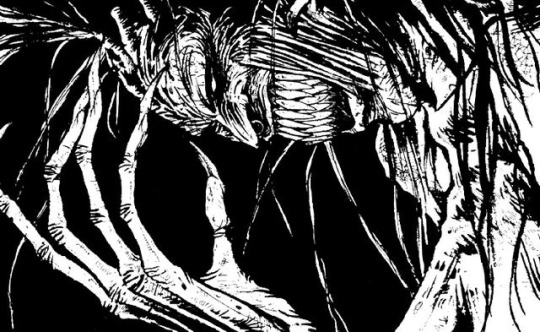
#the yaga journal#baba yaga#slavic folklore#eastern europe folklore#european folklore#perchta#fairies#fairy folklore#demonology#demons#witches
63 notes
·
View notes
Text


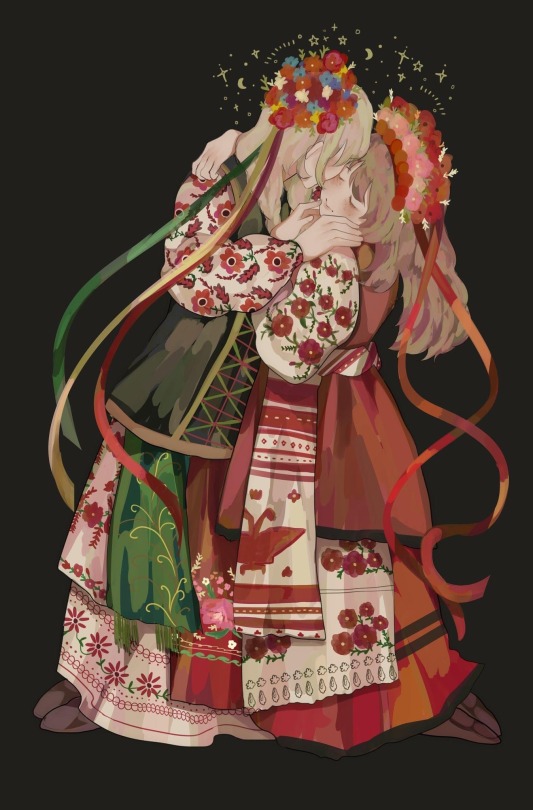
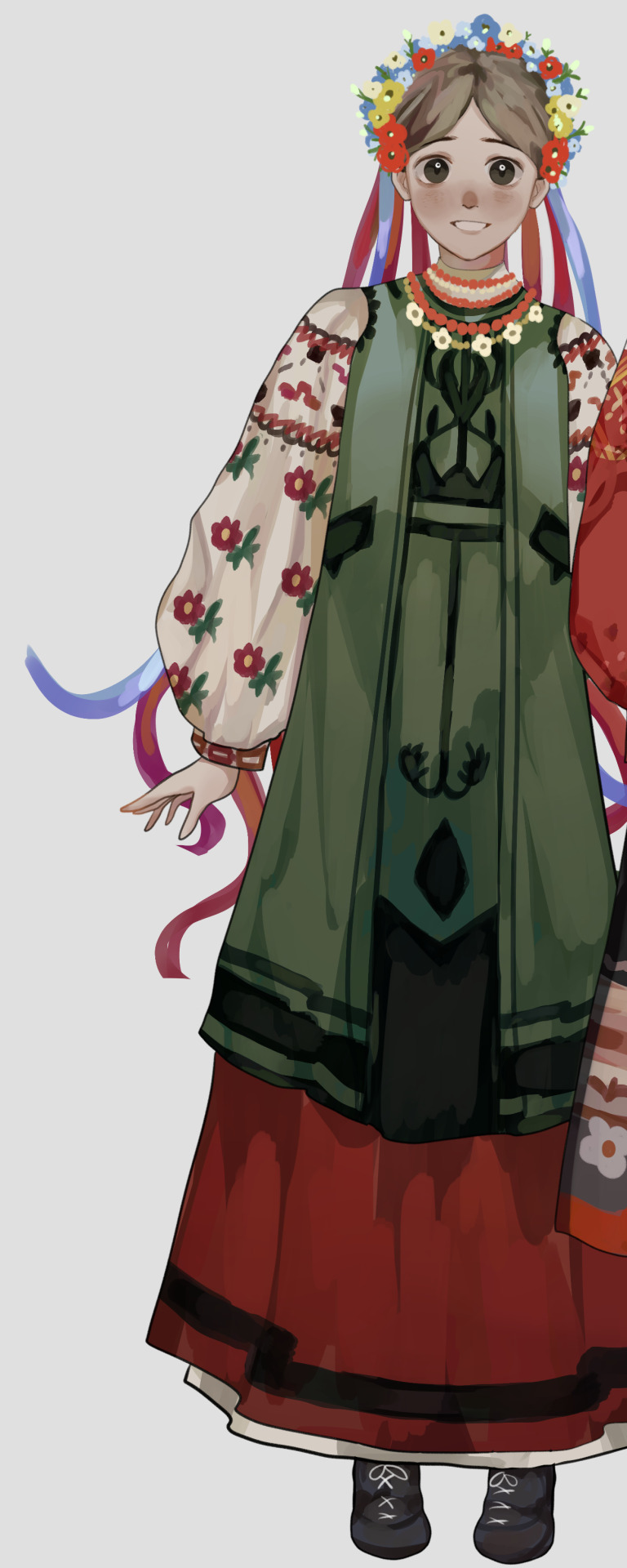
(OLD ART !) My collection of Ukraine folk dress I draw years ago
One of the country that sparked my love for folk dress of European. Huge love !
#feeling better so gotta post something#my art#traditional clothing#folkdress#folk clothing#folklore#european#european culture#art#Illustration#digital painting#ukraine#ukraine folk dress#vyshyvanka#digital art#artwork#вишива́нка#Україна#eastern europe#eastern european#slavic#slavic folklore#artists on tumblr
1K notes
·
View notes
Text





Old colorized photos of Hutsul people of west Ukraine.
#Ukraine#Slavic#Eastern Europe#Europe#Slavs#Ukrainian#East Slavs#East Slavic#History#Culture#Folklore#Hutsul#Hutsuls
489 notes
·
View notes
Text
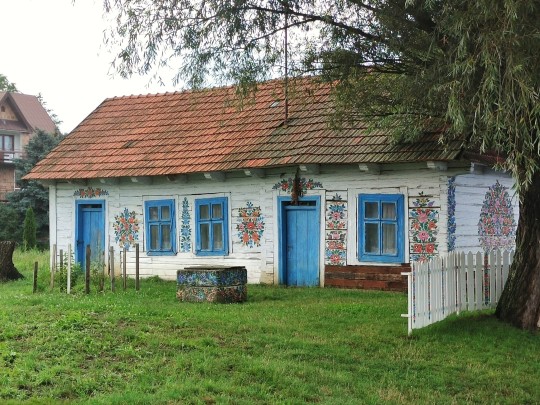
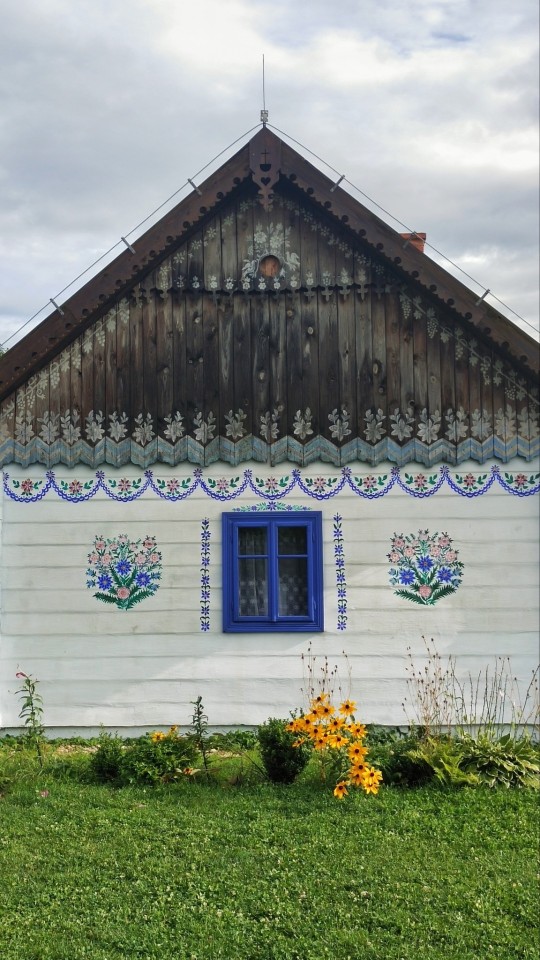

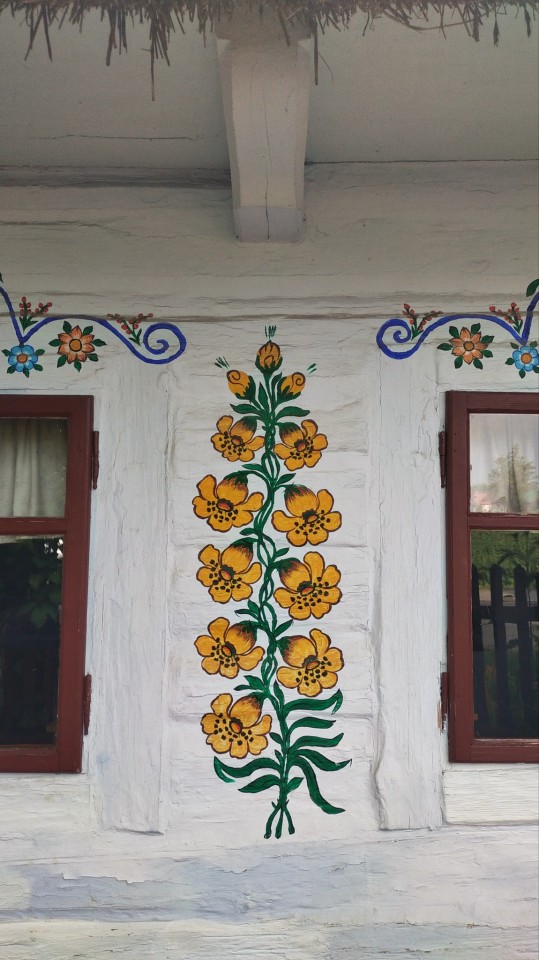
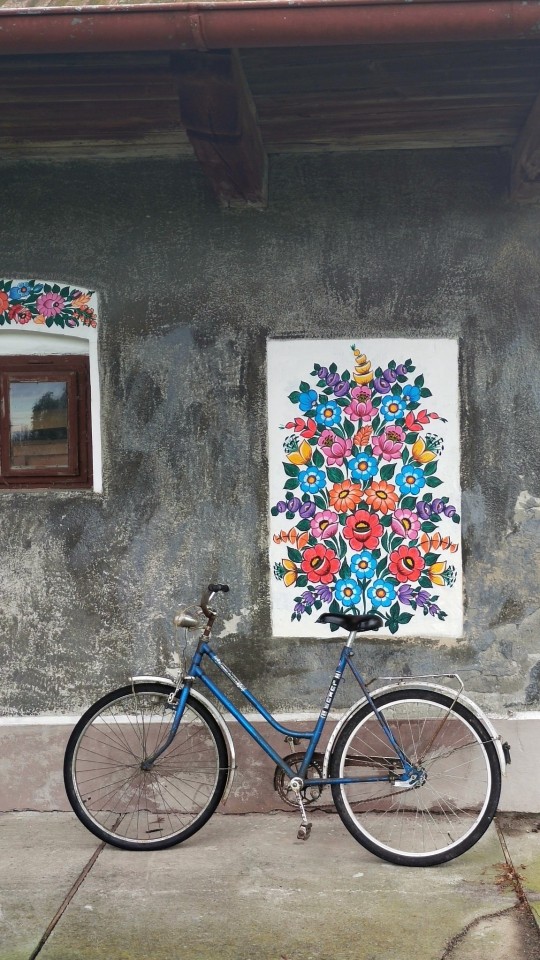
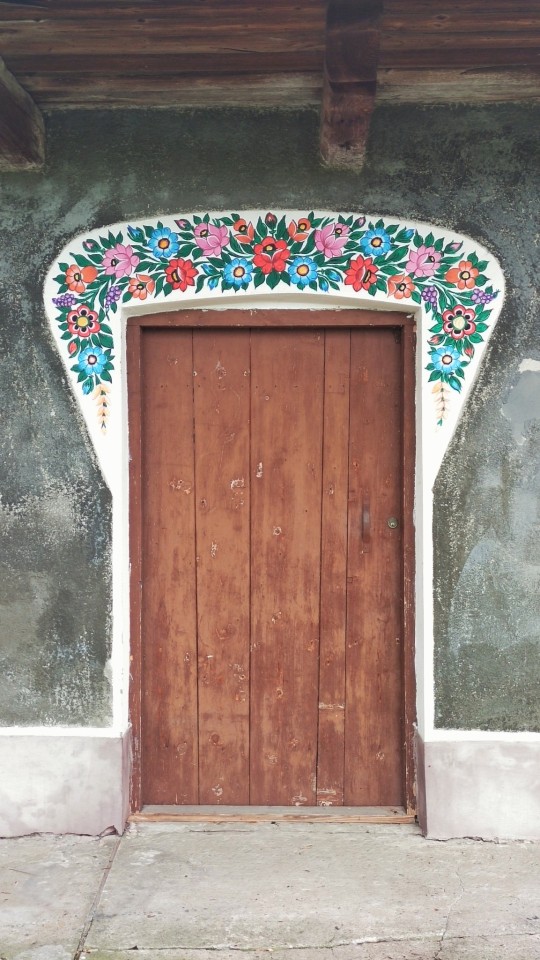
The village of Zalipie, Poland.
#slavic#poland#polish#slavic folklore#folklore#folk art#polska#zalipie#art#architecture#painted house#paint#flowers#flower art#tradition#eastern europe#europe#photography#polish folklore#polish art
2K notes
·
View notes
Text

#святки#slavic russia#slavic witch#slavic culture#slavic mythology#slavic folklore#eastern europe#illustration#digital art#artists on tumblr#witchcraft#artwork#illustrator
182 notes
·
View notes
Text












Gagauz: The Descendants of the Wolves
"In the south of the Republic of Moldova lies the small autonomous region of Gagauzia. Here lives a largely unknown people with old traditions and customs: the Gagauz, a minority of ethnic Turks with Christian Orthodox faith, the descendants of the Wolves.
According to legend, after an enemy raid, a she-wolf discovered a little boy who had miraculously survived in the forest and took care of him. This boy became the ancestor of the Gagauz people.
But very few young people decide to stay in the land of their ancestors. Older people proudly try to preserve their identity, their traditions and, above all, their language in order to continue on the path to the independence they long for."
164 notes
·
View notes
Text

Scene from the most famous Yiddish play The Dybbuk by the Vilner Trupe. 1910s.
#jumblr#jewish#jews#nesyapost#jewish history#jewish culture#yiddish#Poland#Eastern Europe#jewish art#Jewish theater#Jewish actors#the dybbuk#1910s#yiddish folklore#Jewish folklore#ashkenazim#ashkenazi#photography#vintage photography
973 notes
·
View notes
Text


Traditional romanian historic house
#old house#romania#eastern europe#old traditional house#traditional Romanian house#Romanian village#romanian folklore#folklore#moldova#Moldavian house#old Moldavian house#interior design#village interior design#rural life#historic house#antique interior#traditional rural house
183 notes
·
View notes
Text
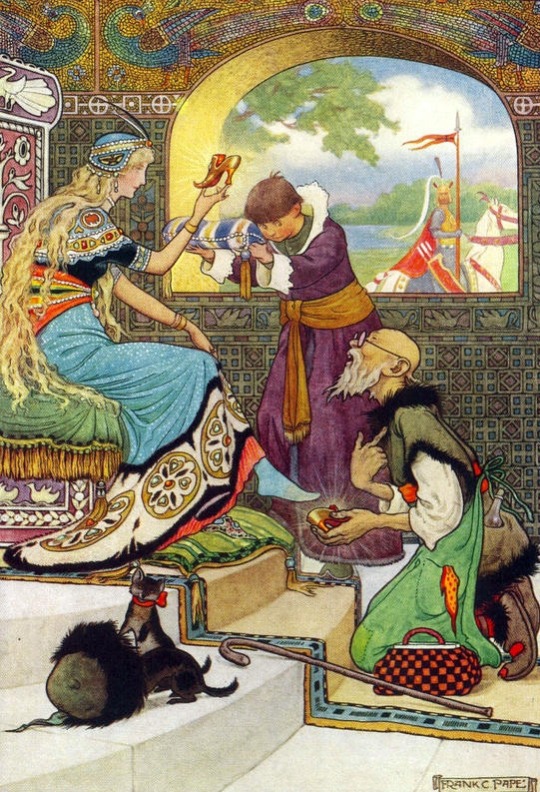

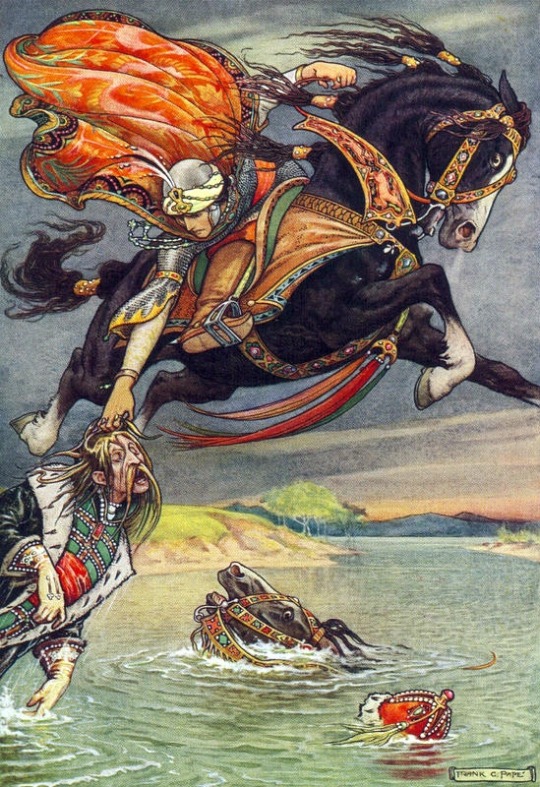


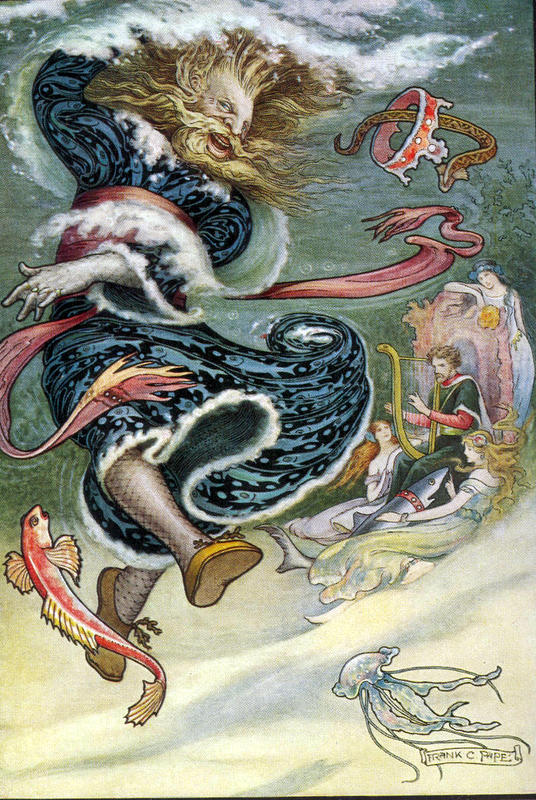

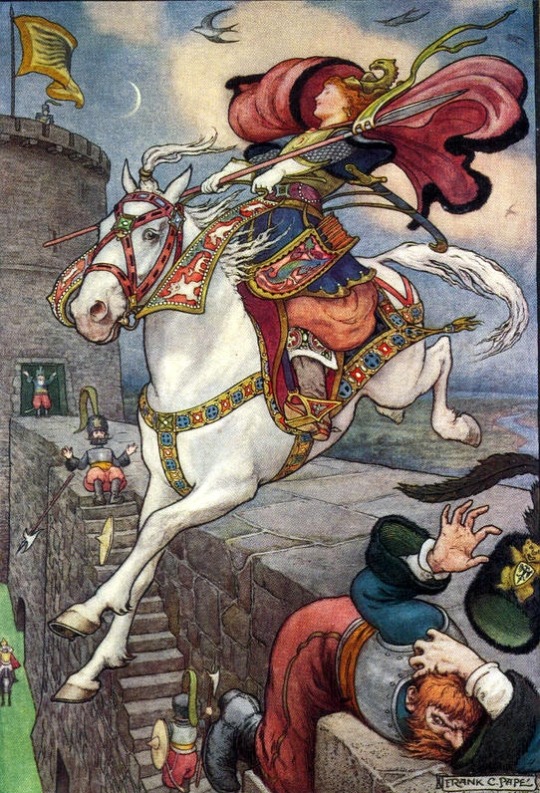
"The Russian Story Book" illustrated by Frank C.Papé (1916)
#Россия#Russia#vintage#book#Frank C.Papé#english artist#artist#books#русская культура#russian culture#literature#english art#art#illustration#русские сказки#russian fairy tales#fairy tales#beauty#русский фольклор#russian folklore#folklore#history#russian#english#Eastern Europe#illustrations#slavic#traditional#Europe#1910s
383 notes
·
View notes
Text

Geralt and Ciri in Carpatian's highlanders outfits, cause I love everything connected with Carpatians :D
#geralt of rivia#geralt z rivii#witcher 3#the witcher#witcher fanart#illustration#medieval core#witcher geralt#the witcher fanart#ciri#cirilla fiona elen riannon#cirilla of cintra#witcher ciri#wiedźmin#dad and daughter#highlands#highlanders#carpathians#folklore art#polish folklore#polishcore#highlander#mountains#tatra mountains#slavic#eastern europe#andrzej sapkowski#folklore#polish
143 notes
·
View notes
Text

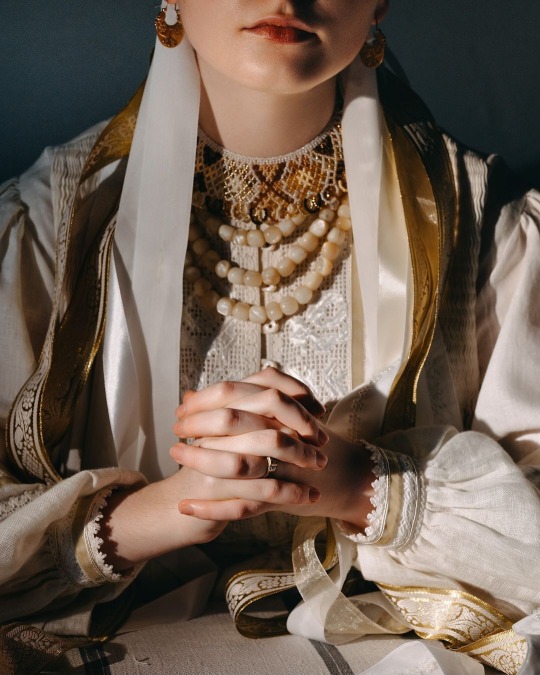





Ukrainian wedding dress by norna.blog
120 notes
·
View notes
Text

pick up that bone you found
#romanisme#romania#romanian art#romanian artist#romanian folklore#eastern europe#balkans#dark art#slavic folklore#romanian blouse#ie#lablouseroumaine#folklore art#alternative photography
112 notes
·
View notes
Text

Somewhere in eastern Europe
#my art#traditional clothing#folkdress#folk clothing#folklore#european#european culture#art#Illustration#digital painting#ukraine#ukraine folk dress#vyshyvanka#digital art#artwork#вишива́нка#Україна#eastern europe#eastern european#slavic#slavic folklore#artists on tumblr
246 notes
·
View notes
Text
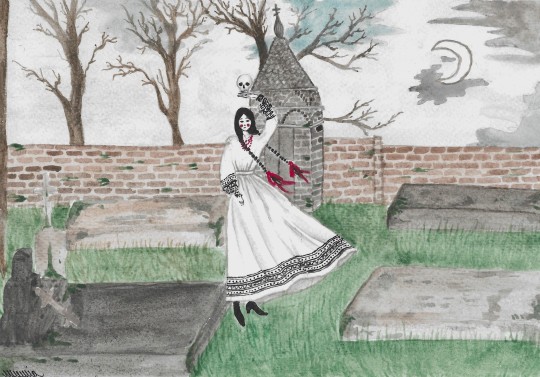
Graveyard spirit in Biłgoraj folk costume
#my art#dress history#fashion history#vintage#historical fashion#folk#folk costume#folk dress#polish folk#polish folklore#polish culture#polska#poland#slavic folk#slavic art#slavic culture#slavic#eastern europe#folklore#traditional dress#biłgoraj#strójbiłgorajski#spooky art#spooky aesthetic#spooky vibes#ghost
208 notes
·
View notes
Text

Serbian young man in fancy dress from village of Crepaja in Banat, 13x18 by János Jankó, 1894. Museum of ethnography in Budapest.
68 notes
·
View notes